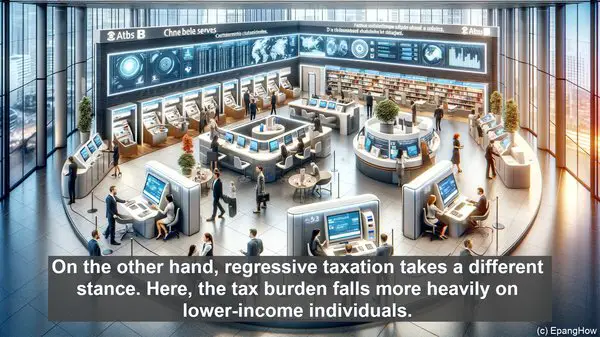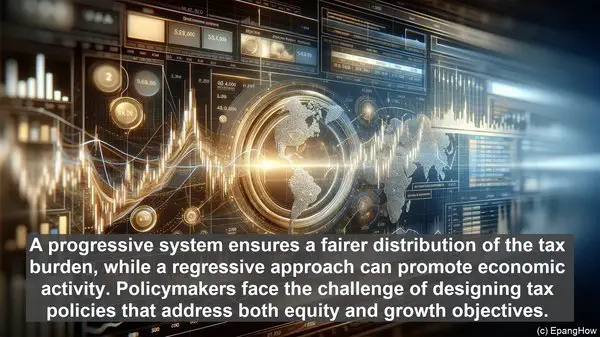Introduction: The Essence of Taxation
Hello, everyone! Taxation is an integral part of any modern society, serving as a means to fund public services and redistribute wealth. However, not all tax systems are created equal. Today, we’ll focus on two contrasting approaches: progressive taxation and regressive taxation.
Progressive Taxation: A Fair Share
Progressive taxation operates on the principle of ‘the more you earn, the more you pay.’ In this system, tax rates increase as income rises. The underlying philosophy is rooted in the concept of ‘ability to pay,’ where those with higher incomes contribute a larger proportion of their earnings. This approach aims to achieve a more equitable distribution of the tax burden.
Regressive Taxation: A Different Perspective
On the other hand, regressive taxation takes a different stance. Here, the tax burden falls more heavily on lower-income individuals. In a regressive system, tax rates decrease as income rises. While this may seem counterintuitive, it’s important to understand the impact on different income groups and the overall economy.

The Impact on Income Distribution
Progressive taxation, by design, seeks to address income inequality. By taxing higher earners at a higher rate, it aims to redistribute wealth and provide a safety net for those with lower incomes. On the flip side, regressive taxation can exacerbate income disparities, as it places a proportionally higher burden on those with limited financial resources.

Economic Considerations
Taxation isn’t just about revenue collection; it also has economic implications. Progressive taxation can potentially dampen economic growth, as higher tax rates on the affluent may reduce their incentive to invest and innovate. Regressive taxation, while often criticized for its impact on lower-income individuals, can stimulate consumer spending, which is a key driver of economic activity.
Balancing Act: Finding the Optimal Approach
In reality, tax systems often incorporate elements of both progressivity and regressivity. Striking the right balance is crucial. A progressive system ensures a fairer distribution of the tax burden, while a regressive approach can promote economic activity. Policymakers face the challenge of designing tax policies that address both equity and growth objectives.
